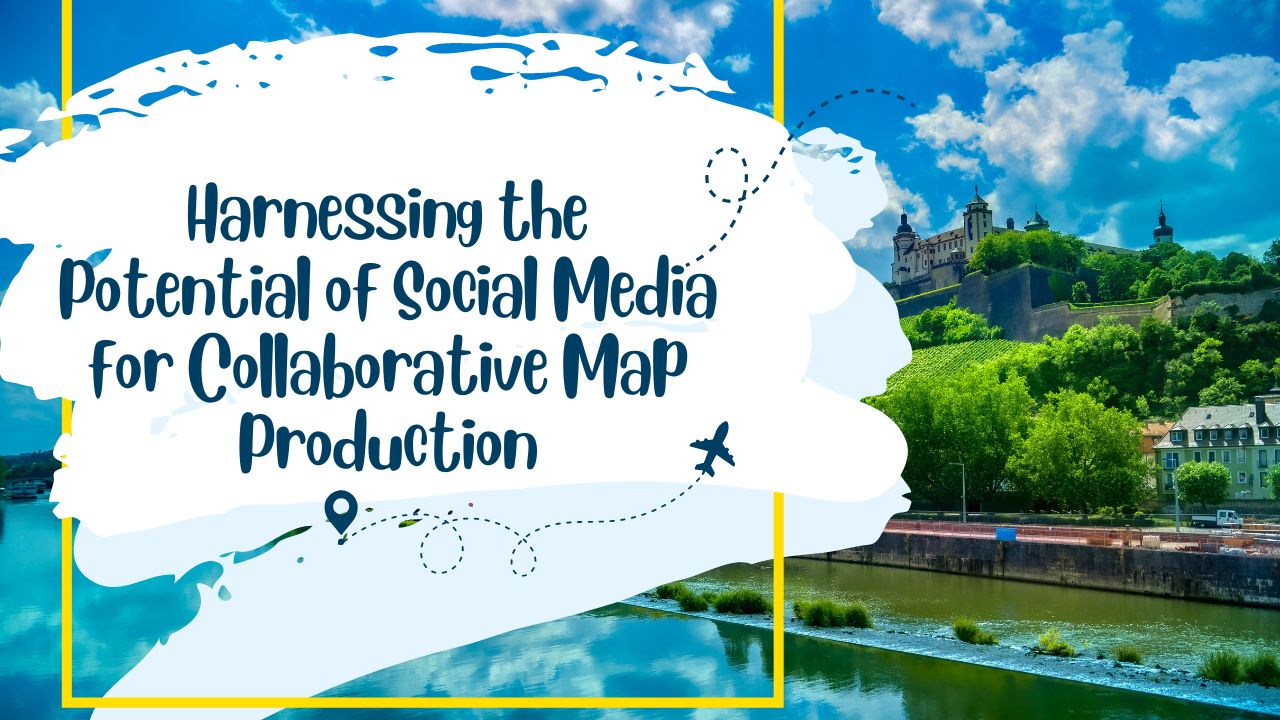Introduction:
Social media platforms have transformed the way we interact, communicate, and share information in today’s interconnected world. Beyond personal interactions and viral trends, social media has the potential to support various productive activities, including map production. This article explores how social media can empower individuals and communities to collaboratively produce maps, leveraging the power of crowdsourcing and collective intelligence.
The Rise of Crowdsourced Mapping:
Traditional map production has historically been a domain controlled by professionals and government agencies. However, with the advent of social media and the democratization of information, crowdsourced mapping has gained significant momentum. Social media platforms provide a fertile ground for engaging a large and diverse crowd, allowing individuals from different backgrounds to contribute their local knowledge, experiences, and expertise to create detailed and up-to-date maps.
Harnessing Collective Intelligence:
The power of social media lies in its ability to tap into the collective intelligence of a vast network of users. By encouraging participation and collaboration, social media platforms can transform map production from a centralized and top-down process to a decentralized and bottom-up approach. The crowd becomes a valuable resource for gathering data, validating information, and providing real-time updates on geographical features, landmarks, transportation networks, and more.
Engaging Communities:
Social media serves as a catalyst for community engagement in map production. Online groups, forums, and communities focused on mapping provide a space for passionate individuals to connect, exchange ideas, and collaborate on mapping projects. These communities foster a sense of ownership and responsibility, leading to more accurate and comprehensive maps. Moreover, social media allows for easy dissemination of information, making it possible to reach a wider audience and mobilize support for mapping initiatives.
Real-Time Data Collection:
One of the significant advantages of using social media for map production is the ability to collect real-time data. Through geotagged posts, photos, and videos, users can document changes in their surroundings and contribute valuable information about new developments, road conditions, points of interest, and other relevant geographic features. This dynamic data collection ensures that maps remain current, reflecting the ever-evolving nature of our environment.
Quality Assurance and Validation:
Crowdsourced mapping, like any collaborative effort, requires mechanisms for quality assurance and validation. Social media platforms provide opportunities for users to engage in discussions, provide feedback, and verify the accuracy of contributed data. Additionally, algorithms and machine learning techniques can be employed to identify and filter out unreliable information, ensuring the overall integrity and reliability of the produced maps.
Implications for Urban Planning and Emergency Response:
The impact of crowdsourced mapping extends beyond recreational and hobbyist pursuits. Urban planners, local authorities, and emergency responders can benefit from real-time, community-generated maps. By tapping into the collective wisdom of the crowd, these stakeholders can access detailed information about infrastructural issues, traffic patterns, public amenities, and potential hazards. Such insights can guide decision-making, improve resource allocation, and enhance emergency response efforts.
Challenges and Future Directions:
While social media-driven map production offers immense potential, it also presents certain challenges. Quality control, privacy concerns, and data management are some of the key areas that need to be addressed. Striking a balance between openness and reliability is crucial to ensure the credibility of the produced maps.
In the future, advancements in artificial intelligence and data analytics will further enhance the capabilities of social media for map production. Automated data extraction, sentiment analysis, and geospatial modeling can augment the collaborative efforts of users, streamlining the mapping process and enabling more efficient decision-making.
Conclusion:
Social media platforms have transformed the way we interact with information, and their potential extends far beyond entertainment and personal connections. Collaborative map production harnesses the power of crowdsourcing and collective intelligence, empowering individuals and communities to create accurate, up-to-date
